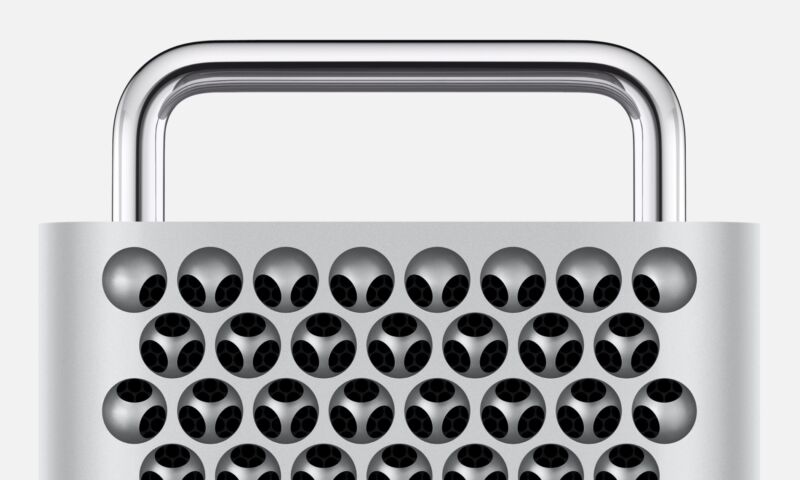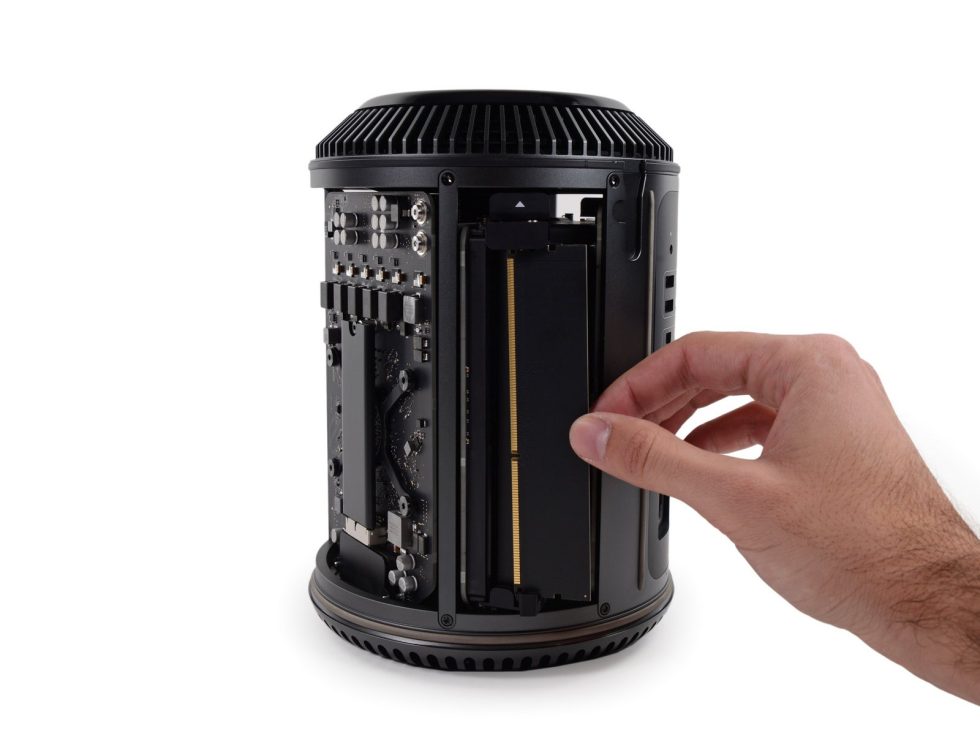
Apple
The Mac Pro is one of the few remaining Intel Macs with no Apple Silicon replacement ready to go, even though we’re a little past the two-year deadline that CEO Tim Cook originally set for the transition back in the summer of 2020 (and to be fair, it has been a very hard-to-predict couple of years).
Bloomberg’s Mark Gurman reports that Apple continues to work on a new version of the Mac Pro, alongside other as-yet-unreplaced Intel Macs like the higher-end Mac mini and the 27-inch iMac, but that a planned “M2 Extreme” chip that would have powered the Apple Silicon Mac Pro has “likely” been canceled.
The Extreme would have strapped two M2 Ultra chips together, in the same way that the current M1 Ultra is a pair of interconnected M1 Max chips, but as of this writing Apple allegedly plans to ship the new Mac Pro with an M2 Ultra chip inside and focus on “easy expandability for additional memory, storage, and other components” to help the Mac Pro stand out from the existing Mac Studio.
Waiting for news in the face of uncertainty isn’t new to Mac Pro holdouts; it has been a constant for the last decade-plus. It has been a very long time since the Mac Pro was updated on anything close to a predictable cadence, especially if you don’t count partial refreshes like the 2012 Mac Pro tower or the addition of new GPU options to the 2019 model. And each of the last two updates—the “trash can” Mac Pro in 2013 and the reforged “cheese grater” version from 2019—have reflected a total shift in design and strategy.
At this point, I’d like Apple to make up its mind: either commit to some kind of consistent strategy or vision for the Mac Pro and its place in the lineup or retire it.
A fading star

Retiring the Mac Pro would have been unthinkable a couple of decades ago, when G3 and G4 Power Mac towers were priced, specced, and marketed more like high-end consumer desktop computers than corporate workstations. But it has been a long time since that was true, and other Macs have stepped in to fill that gap while the Mac Pro has suffered through its identity crisis. Apple’s high-end professional software has also faded during this era, and software packages from Premiere to After Effects to Blender to Autodesk Maya are either platform-agnostic or take advantage of hardware features like the Nvidia-exclusive CUDA API that Apple no longer offers.
The Mac Studio is probably the single best argument against the continued existence of the Mac Pro. It’s the first truly new Mac design of the Apple Silicon era, and it takes full advantage of the M1 (and soon, hopefully, the M2) series’ performance and power efficiency. It’s small, it’s incredibly efficient, it runs relatively cool and quiet, and it actually manages to outperform maxed-out 2019 Mac Pro configurations in many workloads for less money.
It’s something that The Verge’s Mac Studio review did a great job of highlighting—staffers using apps like Premiere, Audition, Photoshop, and After Effects, Avid Pro Tools, and Blender all had nothing but good things to say about the Studio in relation to the Intel Macs and Apple Silicon MacBooks they were using to run those apps day to day. Creating web content isn’t as complex or demanding as creating, say, 3D effects for a major movie or TV show, but that’s a wide range of creators who might have benefitted from a Mac Pro a decade or two ago who definitely don’t need to consider it today.
Apple does still field its own suite of Mac-exclusive professional apps, including Final Cut Pro X, Motion, and Logic Pro. But the rate at which these apps are updated (and the scope of the updates, when they do come) has slowed and narrowed in the last decade at the same time as the Mac Pro has atrophied.
Earlier this year, a group of 112 professional filmmakers signed an open letter asking Apple to improve Final Cut’s collaboration features, respond more quickly to new feature requests and do a better job lobbying for the software within the film industry, because even the creators who prefer to use it in this context “still can’t choose it” because of real and perceived shortcomings in the app and a general lack of expertise and knowledge about the app industry-wide. The Verge’s video editors, likewise, “didn’t want to” help test Final Cut Pro because “none of them use it.”
Apple’s other hardware succeeds in part because it runs Apple software that gives people things they can’t get from other ecosystems. The reverse is true for high-end Mac Pro-style professional workloads, which run mostly in apps that run as well (and in some specific cases, better) on cheaper and more flexible Windows and Linux hardware, and this is reflected in the hardware and software that actual VFX studios use.

A 2021 Studio Platform Survey Report run by the Visual Effects Society Technology Committee surveyed nearly 60,000 workstations across 88 studios of all different sizes; Linux ran on 60 percent of these workstations, while Windows ran on 29 percent and macOS accounted for just 11 percent. The survey also found that most studios planned to increase their usage of Linux and Windows, while most planned to keep their macOS usage at around the same level.
None of this means that Apple should cede this market to Lenovo, Dell, Intel, AMD, Nvidia, and the rest, but Apple needs to be more focused and consistent and serious than it has been with the Mac Pro if it truly intends to compete here.




